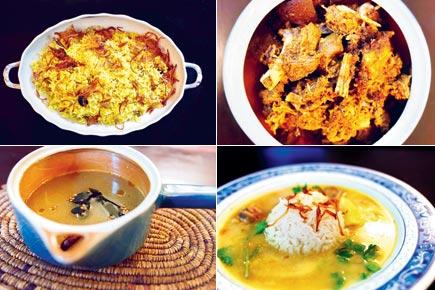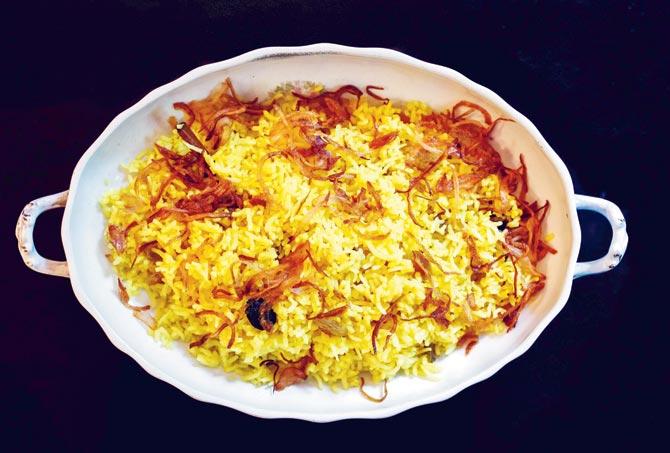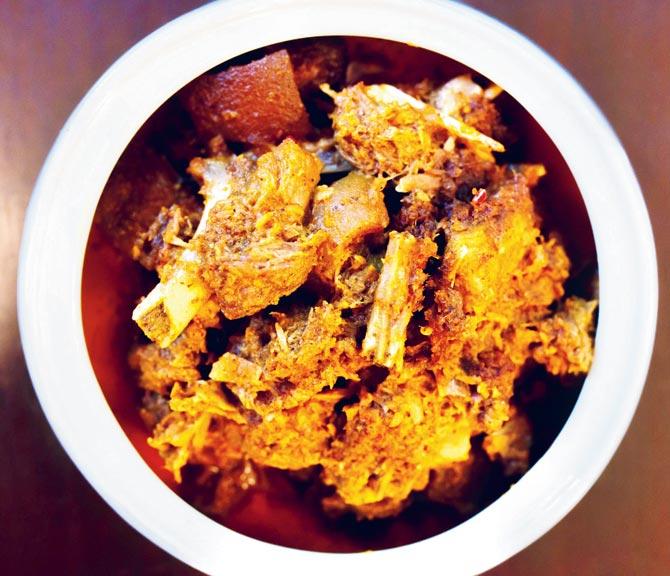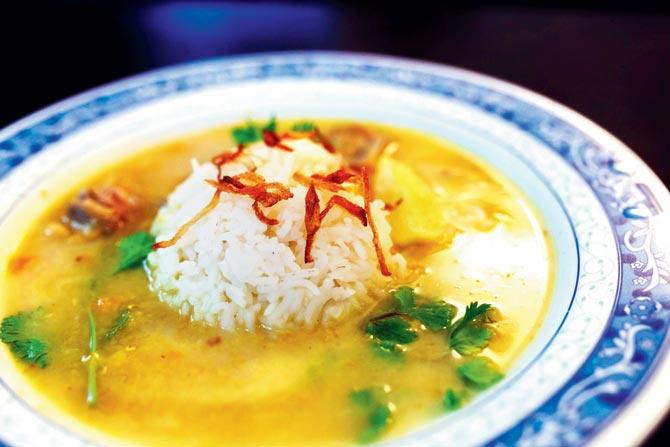A home dining experience this weekend promises to transport you to the Anglo-Indian kitchens of Kolkata

 Yellow Rice
Yellow Rice
Over 500 years ago, the first Portuguese ship touched Indian shores. All of Europe had been hearing about the country and its jewels, its spices and silk. Subsequently, others like the French, Dutch and British followed. Marriages took place between Europeans and Indians, and their descendants came to be known as Anglo-Indians. The community followed a European way of life, but retained Indian sensibilities. There is no better example of this amalgamation than in their cuisine, which is a delightful blend of the East and West.
ADVERTISEMENT

Calcutta Pork Vindaloo
At Pia Promina DasGupta Barve’s Bandra home this weekend, visitors will get a glimpse into the community through its food. DasGupta Barve hails from Kolkata, and this meal is her tribute to the Anglo-Indian community of the region. All the dishes will be served with a dollop of history, culinary and otherwise.
 Pepper water
Pepper water
Spice, spice baby
Anglo-Indian cuisine, although westernised, has borrowed heavily from Indian cooking styles, which features the liberal use of sinus-clearing as well as subtle, fragrant spices. As a result, the community has never shied away from using spices in its food, a far cry from the bland fare the English are known to consume. “Turmeric finds pride of place in Anglo-Indian food, and you will find red chillies used in a lot of dishes too. Even the cutlets have chillies,” says DasGupta Barve. She has also been working on a recipe for traditional sausages, she mentions, which are stuffed with onions, chillies and cinnamon.

Mulligatawny Soup with Mutton
On a pepper trail
Pepper appears to feature promnently in the cuisine. “I believe mulligatawny soup came from southern India, because, back in the day, many Anglo-Indians worked with the railways and therefore travelled a lot,” says DasGupta Barve. Mulligatawny is the Anglicised pronunciation of ‘milagutannir,’ which is Tamil for ‘pepper water.’ Anglo-Indians adopted this runny broth made with dal, and enriched it with the addition of coconut milk and meat (usually lamb), resulting in an entirely different dish.
Although called a soup, mulligatawny is meant to be served with fragrant steamed rice and a wedge of lime. But, there is yet another Anglo-Indian dish that goes by the name pepper water. DasGupta Barve says, “This dish, however, tastes a lot like South Indian rasam, and pairs amazingly well with sausage curry.”
Babalok with a dash of frugality
“The Anglo-Indian community wasn’t very well off. After the British left, they lost their standing in Indian society,” she says, adding, “They were very frugal, and didn’t let anything go to waste, more so after they fell on bad days. This is
reflected in their cuisine, which, for instance, makes use of the least-preferred cuts of meat.”
Meat dishes abound, like the Portuguese influenced pork vindaloo, or the jhaal firezi. “Traditionally, the stir-fried jhaal firezi was a réchauffé dish, made with leftover beef or mutton roast. It’s dry and spicy,” says DasGupta Barve. The Kolkata vindaloo, meanwhile, is milder and sweeter than the version found in Goa, characterised by its use of mustard oil, which is used liberally by Bengalis. She explains that even the use of babalok (Anglo-Indian speak for baby prawns), a semi-dry, tempered version of which will be served at the pop-up, was determined by the lower price of tiny prawns. Similarly, the yellow rice, which also finds a place on the weekend menu is, according to DasGupta Barve, a “very cheap pulao made with turmeric, and a barely-there smattering of raisins and garam masala.”
An English sweet tooth
DasGupta Barve says that although Indian influences have crept into the savoury dishes of the Anglo-Indians, they have somehow completely eluded the desserts. “The sweets are very European. You will find puddings and even kulkuls (tiny balls of sweet dough rolled on the tines of a fork, then fried; a Portuguese Christmas treat) in an Anglo-Indian home,” she adds. The only crossover dessert, she mentions, is the ubiquitous rice pudding. At the pop-up, she will be serving a steamed pudding with custard, providing the perfect end to a very satisfying meal.
On: October 1, 8 pm onwards
At: Bandra (W) (Address will be provided at the time of confirmation).
Cost: 1,499
Log on to: authenticook.com
 Subscribe today by clicking the link and stay updated with the latest news!" Click here!
Subscribe today by clicking the link and stay updated with the latest news!" Click here!







